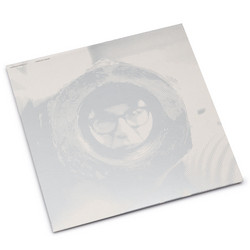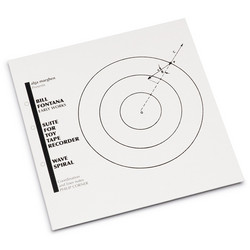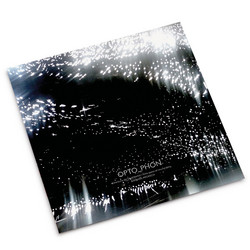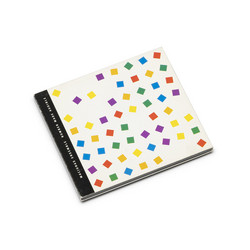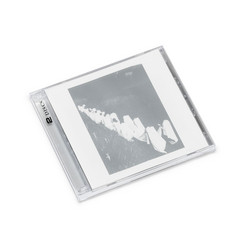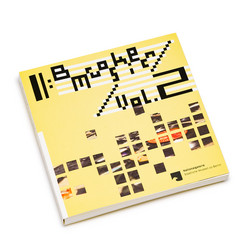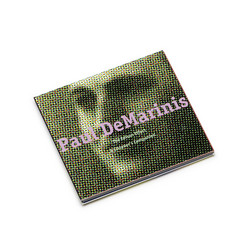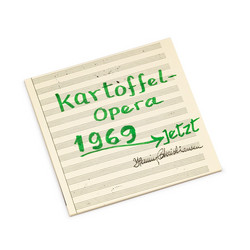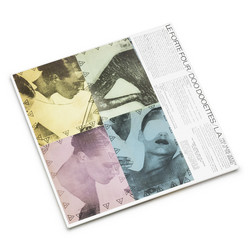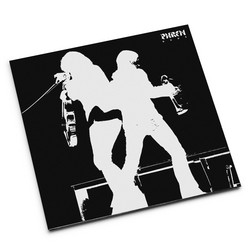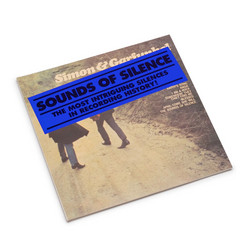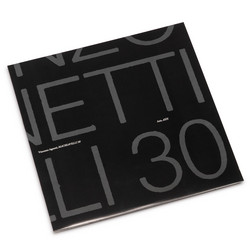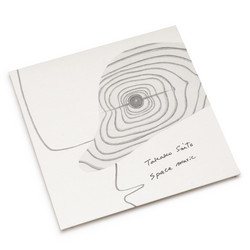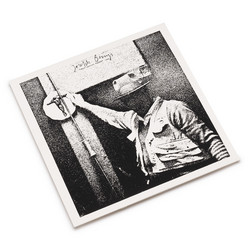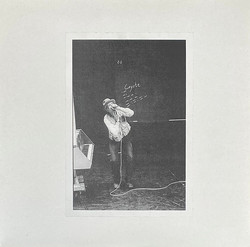Lucky restock, totally sold-out at the label * Edition of 250 copies with YK Blue inner sleeve and insert with score. * Over the last decade or so, the Austrian imprint, Edition Bierammer, has done remarkable work illuminating the thrilling context at the juncture of fine art world and radical sonority often designated within the difficult to define territory of the “artist record”: recordings of music or sound-art either made by artists who work primarily within the field of visual art, or that have some form of collaboration with them. Edition Bierammer has thus far focused on the former, bringing forth stunning releases by Joseph Beuys, Roman Opalka, Joseph Beuys & Nam June Paik, and Jean Tinguely, and now returns with one of their most ambitious and striking releases to date, the first ever release of the artist Yves Klein’s groundbreaking conceptual symphony “Symphonie Monoton-Silence” (Monotone Silence Symphony). Conceived during the late 1940s and premiered in Paris during 1960, Klein’s preeminent musical gesture foreshadowed the entire minimalist movement, as well as (depending on how you assign the dates) John Cage’s 4'33" via its use of sustained tone and silence. Captured during a performance in 1998 at Chapelle S.te Reita, Paris, by an ensemble conducted by Philippe Arrii Blachette, Edition Bierammer’s stunning release of one of the most important and rarely heard musical landmarks of the 20th Century is issued as a beautiful vinyl edition of 250 copies with International Klein Blue inner-sleeve and an insert that reproduces Klein’s original score. A likely revelation for any fan of avant-garde and experimental music, and a total must for aficionados of the “artist record”, sound art, and performance.
Born in 1928, Yves Klein was among the most radical and contentious European artists of the post-war period. A leading member of the French artistic movement of Nouveau Réalisme - a movement closely linked in its ideas with Fluxus that advocated “a return to objective reality and to the subject, and emphasized the social content of all reality” - Klein’s work, famed for its monochromatic use of his trademark blue (International Klein Blue) - has been critically regarded as being the inspiration for, and forerunner of both minimalism and pop art.
In addition to all of his other groundbreaking efforts, Yves Klein was a leader in the emergence of performance art. Among the earliest and most important of these gestures is his “Symphonie Monoton-Silence” (Monotone Silence Symphony). Klein stated that he conceived the idea for the work sometime between 1947 and 1948, which is scored for 20 singers, 10 violins, 10 cellos, 3 double basses, 3 trumpets, 3 flutes and 3 oboes, the piece consists of a single 20-minute sustained D major chord followed by a 20-minute silence. In the first public performance in 1960, three naked models were painted with International Klein Blue body paint, and left imprints of their bodies on canvases placed on the stage. While images of that performance have left their impressions across the entire history of modern art, the sounds have remained elusive, with no released recording and very few performances since the artists death in 1962, infusing Edition Bierammer’s first ever release of the work with huge historical significance.
In 1959, prior to the work’s premiere Klein stated: “During this period of concentration, I created, around 1947–1948, a monotone symphony whose theme expresses what I wished my life to be. This symphony of forty minutes duration (although that is of no importance, as one will see) consisted of one unique continuous sound, drawn out and deprived of its beginning and of its end, creating a feeling of vertigo and of aspiration outside of time. Thus even in its presence, this symphony does not exist. It exists outside of the phenomenology of time because it is neither born nor will it die, after existence. However, in the world of our possibilities of conscious perception, it is silence – audible presence.” (from “Overcoming the problematics of Art” 1959).
While the work debuted seven years after John Cage’s 4'33", if we take Klein at his word that “Symphonie Monoton-Silence” was conceived sometime around 1947–1948, its historical importance swells. Regardless, his words are illuminating: "Silence… This is really my symphony and not the sounds during its performance. This silence is so marvelous because it grants happenstance and even sometimes the possibility of true happiness, if only for only a moment, for a moment whose duration is immeasurable.” (from "Truth Becomes Reality” 1960). Regarded within a similar creative and historical framework against minimalism, even taking La Monte Young at his word that “Trio for Strings” originated in 1958, Klein’s use of sustained tone is undeniably groundbreaking and ahead of its time. As some indication of this, the composer and performer Roland Dahinden’s roughly contemporaneous statement that “You can’t really do a full rehearsal of something like this” because “It’s too hard. Everyone would just die” is illuminating of how forward-thinking it was at the time.
Comparatively, by today’s standards, from a historical viewpoint that has ingested the entire history of minimal music since, “Symphonie Monoton-Silence” - scored for 52 performers and realised in this instance by an ensemble conducted by Philippe Arrii Blachette in 1998 at Chapelle S.te Reita, Paris - is astoundingly seductive in every possible way. One might imagine a dense, harmonically rich 20-minute sustained D major chord followed by a 20-minute silence, which one of the original 1960 singers, Sahra Motalebi, described as “The reality is that it’s like a kind of bizarre primordial universe chorus. It’s not like a note you’ve ever heard”, and which Klein compared the sound of a symphony of screams.
A deeply engrossing and much needed counterpoint to the images that so many of us have seen of the original performance of “Symphonie Monoton-Silence” - featuring three naked women, covered in blue paint and pressed their bodies against canvas - Edition Bierammer’s much needed, first ever release of this astounding work by Yves Klein is unquestionably among the most historically important records of the year and possibly the most listenable “artist record” we can call to mind. Issued as a beautiful vinyl edition of 250 copies with Inernational Klein Blue inner-sleeve and an insert that reproduces Klein’s original score, this one is going to disappear fast.

